
How to Use Bipolar Stepper Motor (NEMA 17): Examples, Pinouts, and Specs
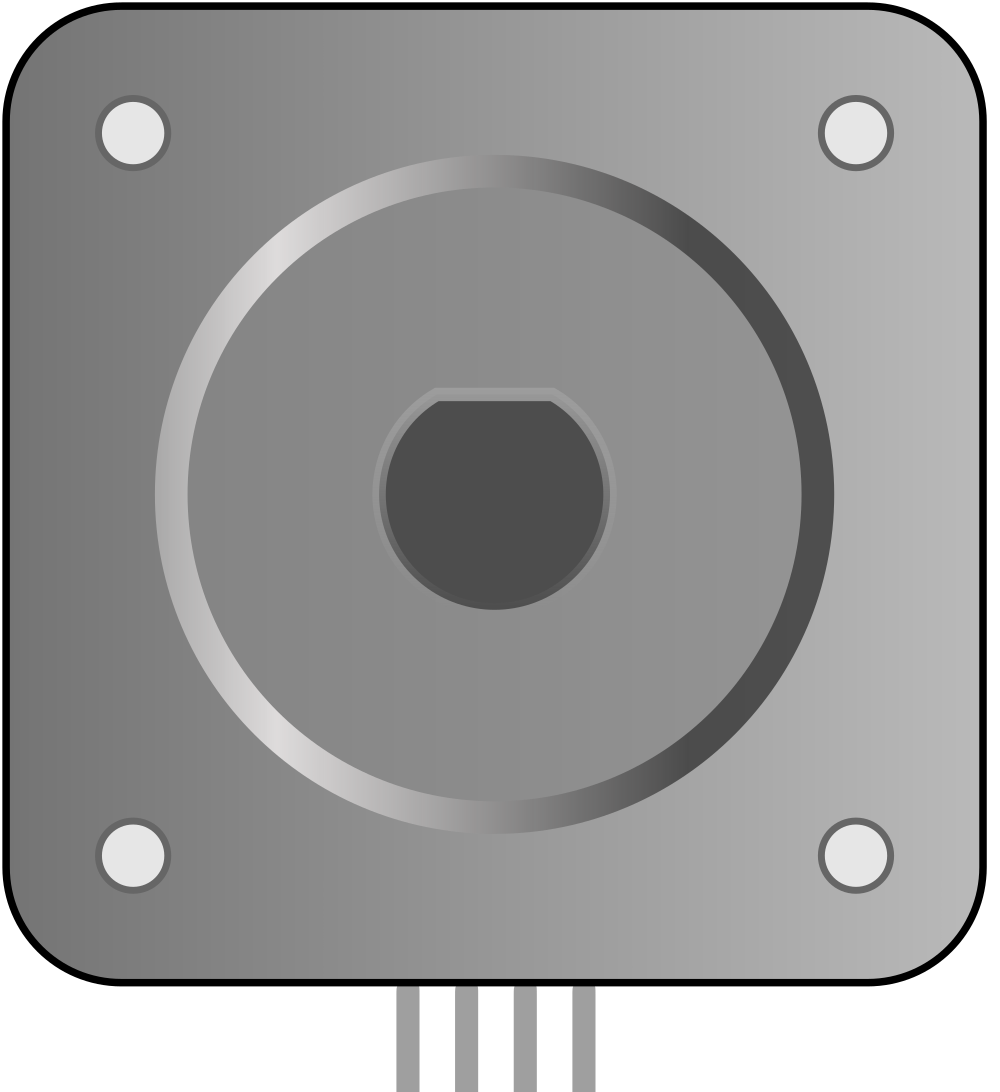
 Design with Bipolar Stepper Motor (NEMA 17) in Cirkit Designer
Design with Bipolar Stepper Motor (NEMA 17) in Cirkit DesignerIntroduction
The Bipolar Stepper Motor (NEMA 17) is a type of stepper motor that uses two coils to generate magnetic fields, enabling precise control of rotation and position. The "NEMA 17" designation refers to the motor's faceplate dimensions, which are 1.7 inches (43.2 mm) square. This motor is widely used in applications requiring accurate positioning, such as 3D printers, CNC machines, robotics, and automated systems. Its compact size, high torque, and reliability make it a popular choice for both hobbyists and professionals.
Explore Projects Built with Bipolar Stepper Motor (NEMA 17)
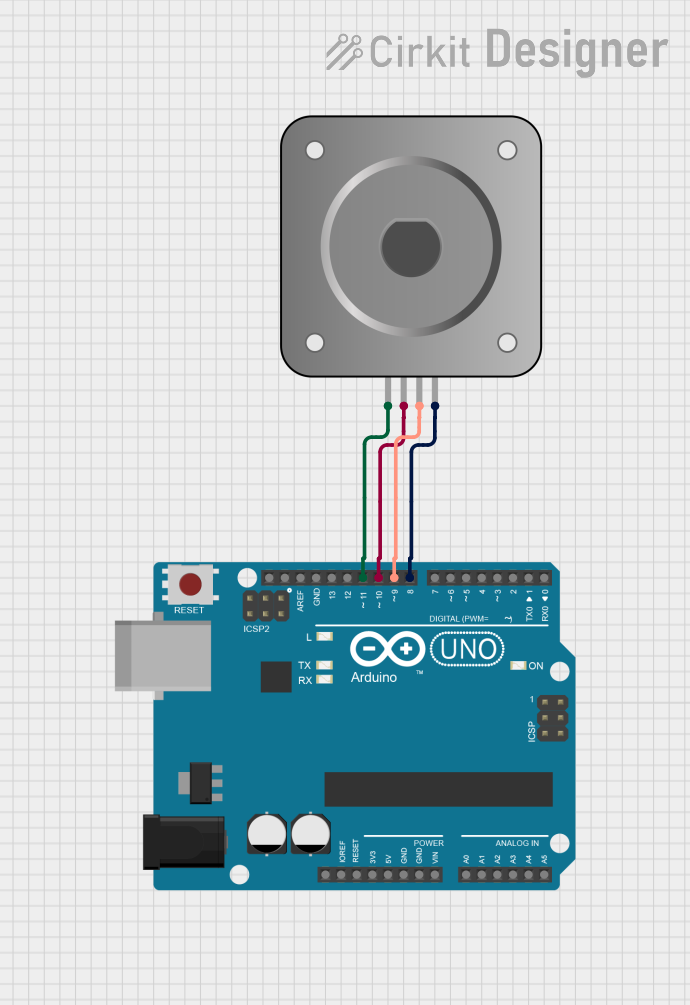
 Open Project in Cirkit Designer
Open Project in Cirkit Designer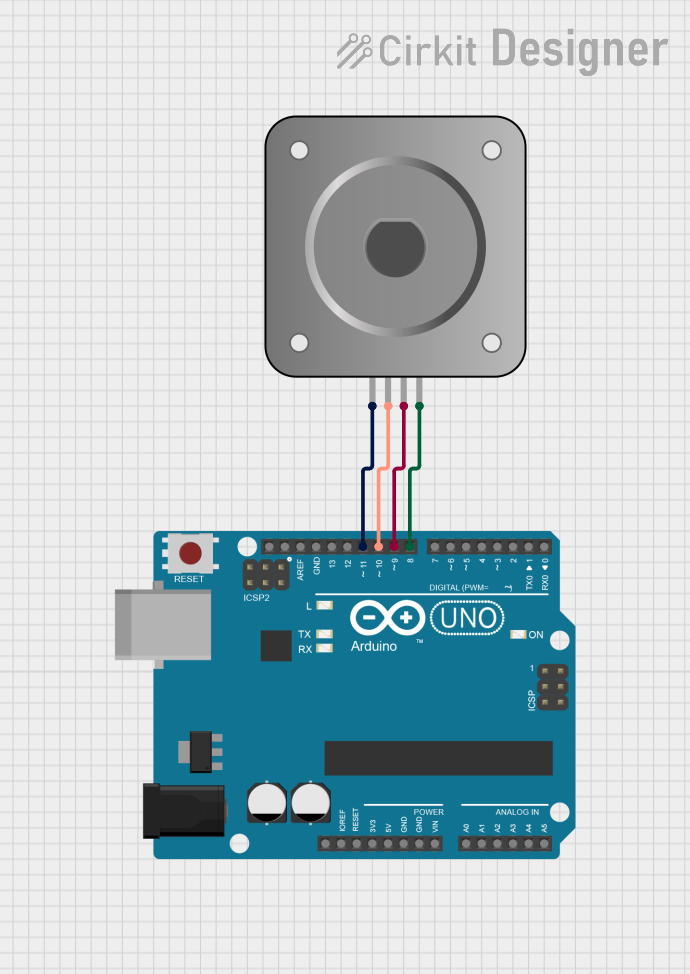
 Open Project in Cirkit Designer
Open Project in Cirkit Designer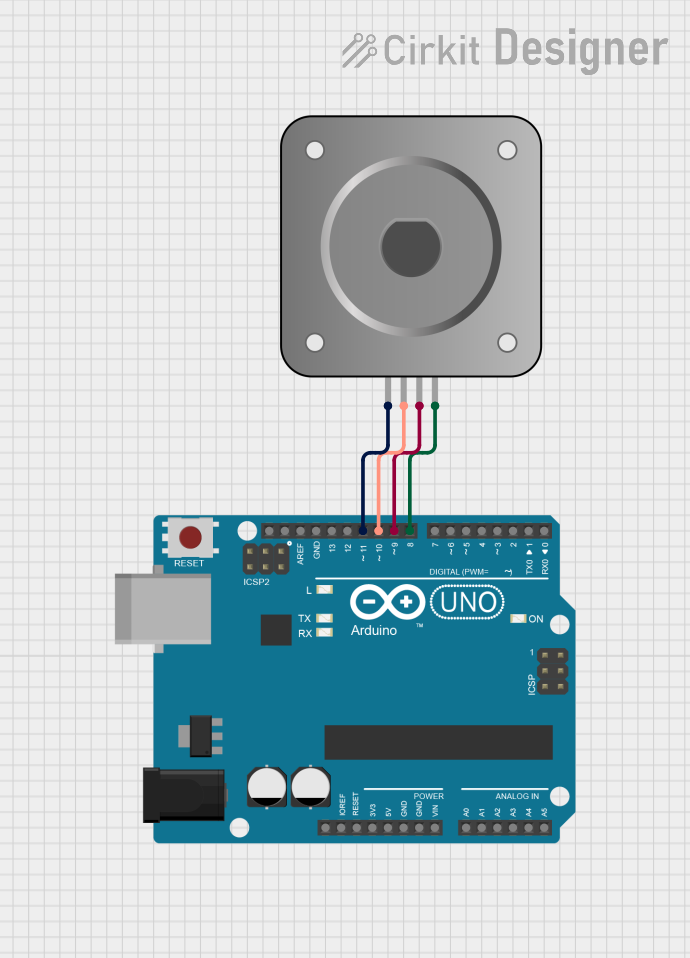
 Open Project in Cirkit Designer
Open Project in Cirkit Designer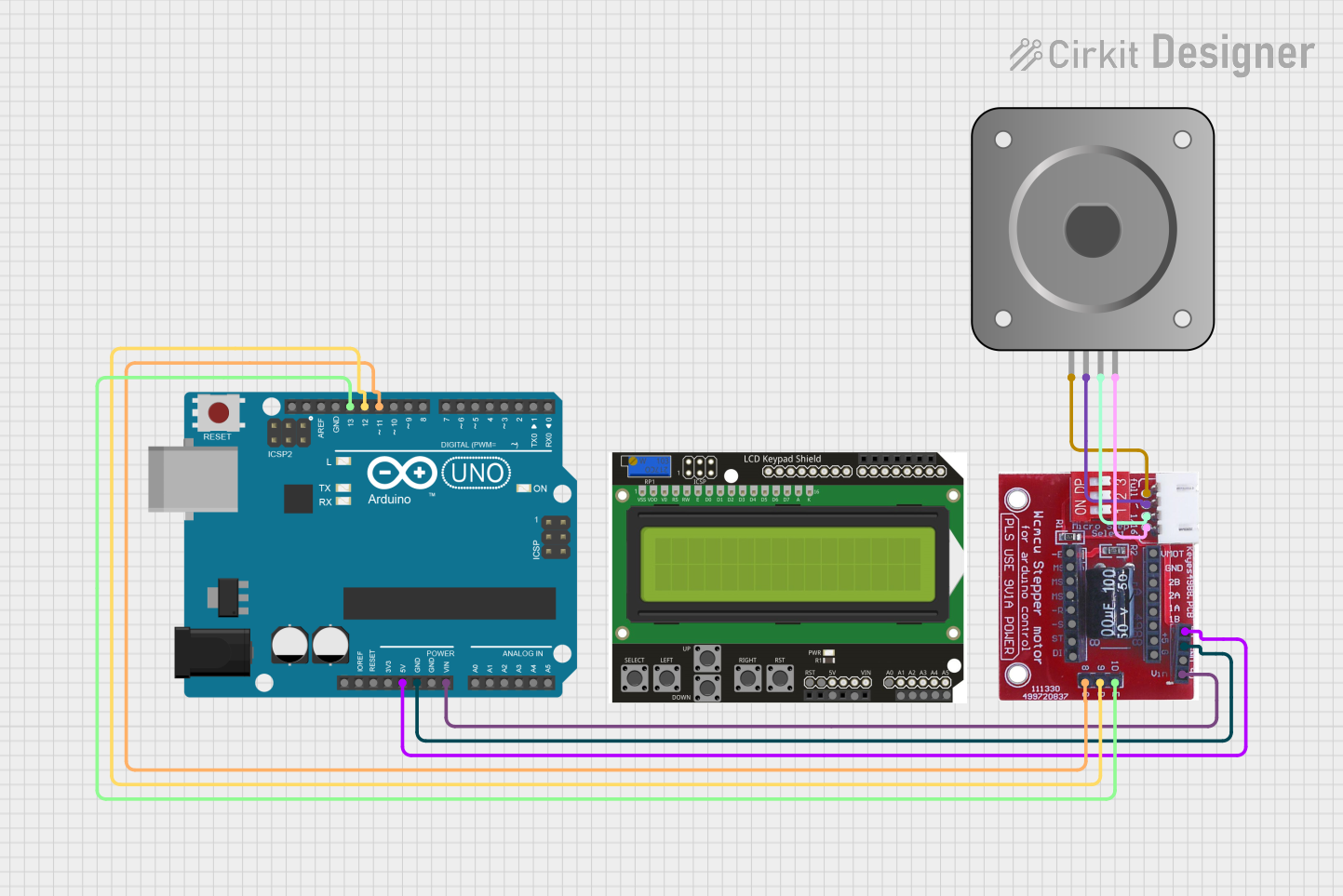
 Open Project in Cirkit Designer
Open Project in Cirkit DesignerExplore Projects Built with Bipolar Stepper Motor (NEMA 17)

 Open Project in Cirkit Designer
Open Project in Cirkit Designer
 Open Project in Cirkit Designer
Open Project in Cirkit Designer
 Open Project in Cirkit Designer
Open Project in Cirkit Designer
 Open Project in Cirkit Designer
Open Project in Cirkit DesignerTechnical Specifications
Below are the key technical details for the Bipolar Stepper Motor (NEMA 17):
| Parameter | Value |
|---|---|
| Step Angle | 1.8° (200 steps per revolution) |
| Holding Torque | 40-50 N·cm (varies by model) |
| Rated Voltage | 2.8 V (typical) |
| Rated Current | 1.2 A per phase (typical) |
| Resistance per Phase | 2.4 Ω |
| Inductance per Phase | 3.2 mH |
| Shaft Diameter | 5 mm |
| Dimensions (L x W x H) | 42 x 42 x 48 mm |
| Weight | ~280 g |
Pin Configuration and Descriptions
The Bipolar Stepper Motor (NEMA 17) has four wires, corresponding to two coils. The pinout is as follows:
| Wire Color | Coil | Description |
|---|---|---|
| Red | Coil A | Positive terminal of Coil A |
| Blue | Coil A | Negative terminal of Coil A |
| Green | Coil B | Positive terminal of Coil B |
| Black | Coil B | Negative terminal of Coil B |
Note: Wire colors may vary depending on the manufacturer. Use a multimeter to verify coil pairs by checking continuity between wires.
Usage Instructions
How to Use the Component in a Circuit
- Identify Coil Pairs: Use a multimeter to identify the two coil pairs. Check for continuity between wires; each pair corresponds to one coil.
- Connect to a Stepper Driver: Use a stepper motor driver (e.g., A4988 or DRV8825) to control the motor. Connect the motor wires to the driver's output terminals (e.g., A+, A-, B+, B-).
- Power the Driver: Provide the appropriate voltage and current to the stepper driver as per its specifications. Ensure the power supply matches the motor's requirements.
- Control with a Microcontroller: Use a microcontroller (e.g., Arduino UNO) to send step and direction signals to the driver. This allows precise control of the motor's rotation.
Important Considerations and Best Practices
- Current Limiting: Set the current limit on the stepper driver to match the motor's rated current (e.g., 1.2 A per phase). This prevents overheating and damage.
- Microstepping: Enable microstepping on the driver for smoother motion and higher resolution.
- Cooling: If the motor or driver becomes excessively hot, consider adding a heatsink or fan for cooling.
- Power Supply: Use a stable power supply with sufficient current capacity to avoid voltage drops during operation.
Example Code for Arduino UNO
Below is an example of how to control the NEMA 17 stepper motor using an Arduino UNO and an A4988 stepper driver:
// Define pin connections
const int stepPin = 3; // Pin for step signal
const int dirPin = 4; // Pin for direction signal
void setup() {
pinMode(stepPin, OUTPUT); // Set step pin as output
pinMode(dirPin, OUTPUT); // Set direction pin as output
digitalWrite(dirPin, HIGH); // Set initial direction (HIGH = clockwise)
}
void loop() {
// Rotate the motor 200 steps (1 revolution for 1.8° step angle)
for (int i = 0; i < 200; i++) {
digitalWrite(stepPin, HIGH); // Generate a step pulse
delayMicroseconds(500); // Pulse width (adjust for speed)
digitalWrite(stepPin, LOW); // End of step pulse
delayMicroseconds(500); // Delay between steps
}
delay(1000); // Wait 1 second before changing direction
// Change direction
digitalWrite(dirPin, LOW); // Set direction to counterclockwise
// Rotate the motor 200 steps in the opposite direction
for (int i = 0; i < 200; i++) {
digitalWrite(stepPin, HIGH);
delayMicroseconds(500);
digitalWrite(stepPin, LOW);
delayMicroseconds(500);
}
delay(1000); // Wait 1 second before repeating
}
Note: Adjust the
delayMicroseconds()value to control the motor's speed. Lower values result in faster rotation.
Troubleshooting and FAQs
Common Issues and Solutions
Motor Not Moving
- Cause: Incorrect wiring or loose connections.
- Solution: Verify the wiring and ensure all connections are secure. Check coil pairs with a multimeter.
Motor Vibrates but Doesn't Rotate
- Cause: Incorrect stepper driver configuration or insufficient power.
- Solution: Check the driver's step and direction signals. Ensure the power supply meets the motor's requirements.
Motor Overheating
- Cause: Current limit set too high on the driver.
- Solution: Adjust the current limit to match the motor's rated current (e.g., 1.2 A per phase).
Skipping Steps
- Cause: Excessive load or insufficient torque.
- Solution: Reduce the load or increase the motor's torque by enabling microstepping.
FAQs
Q: Can I run the NEMA 17 without a driver?
A: No, a stepper driver is required to control the motor's coils and provide the necessary current.Q: What is the maximum speed of the NEMA 17?
A: The maximum speed depends on the power supply, driver, and load. Typically, it can achieve up to 1000 RPM under optimal conditions.Q: How do I reverse the motor's direction?
A: Change the direction signal (e.g., toggle thedirPinin the Arduino code) or swap the connections of one coil.Q: Can I use the NEMA 17 with a 12V power supply?
A: Yes, but ensure the stepper driver regulates the current to prevent overheating.
By following this documentation, you can effectively use the Bipolar Stepper Motor (NEMA 17) in your projects!